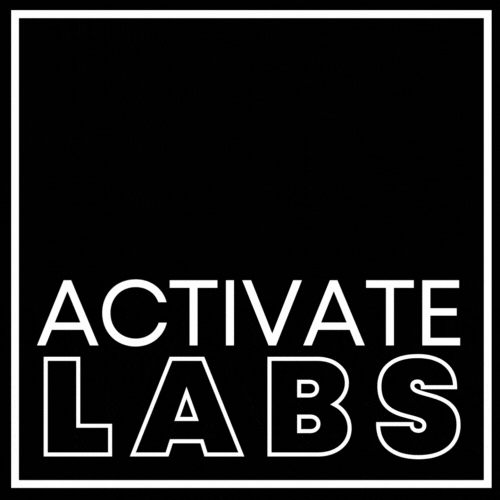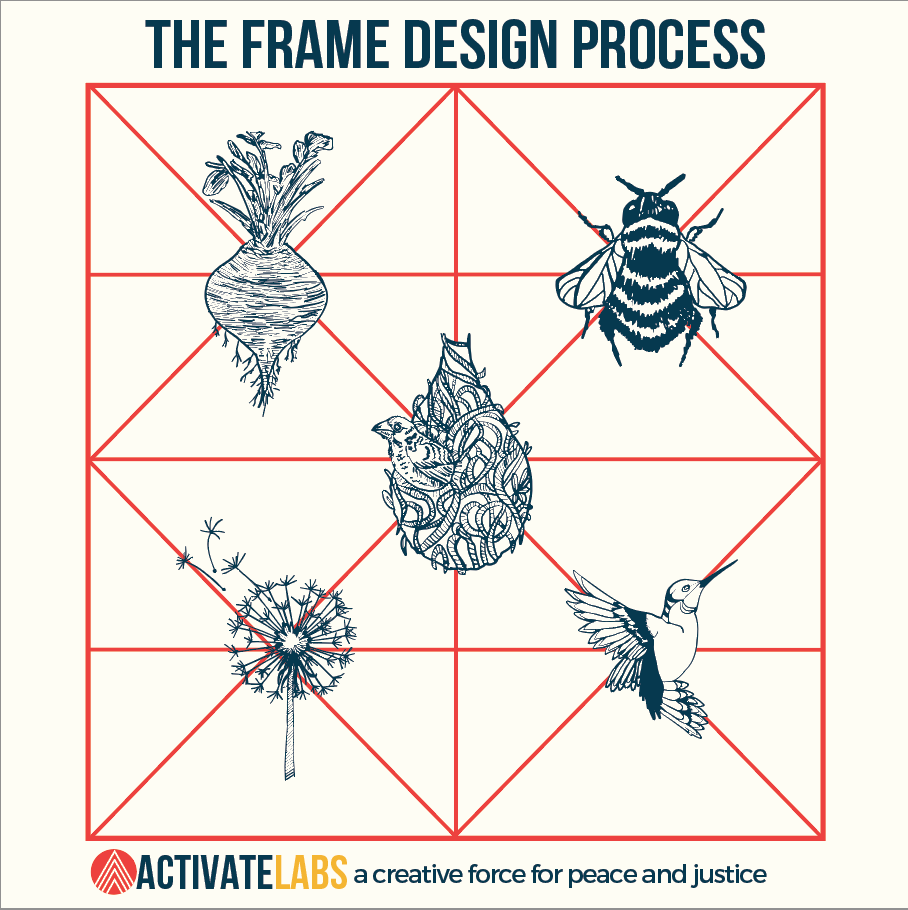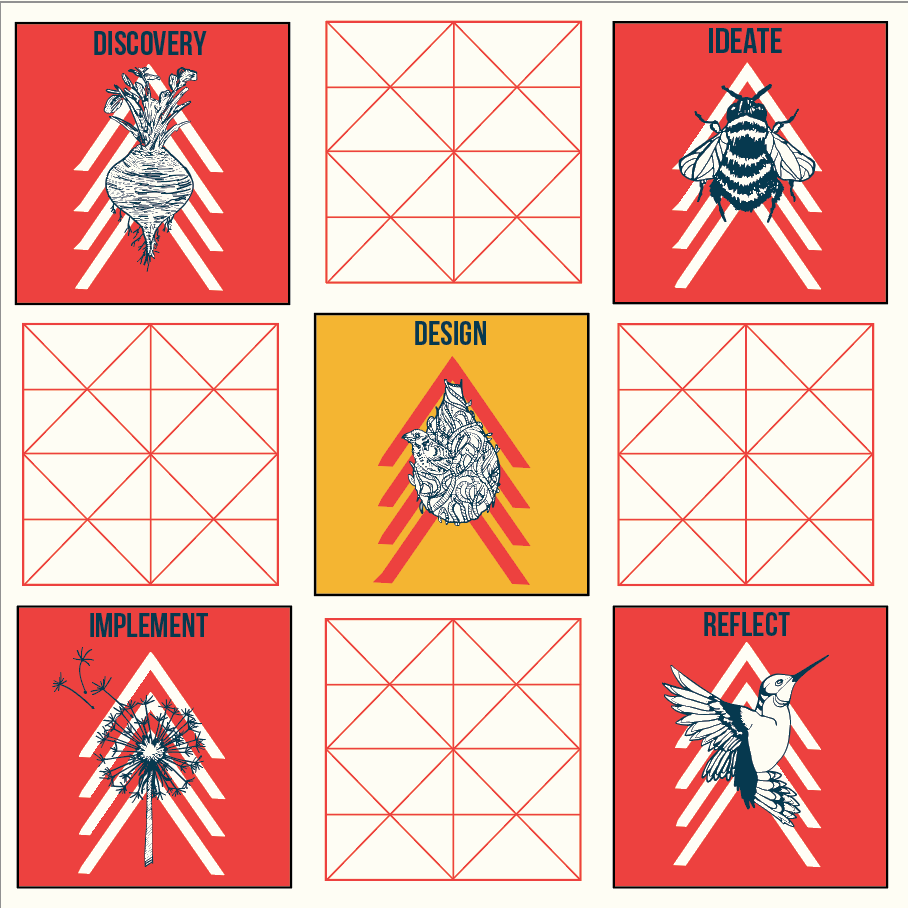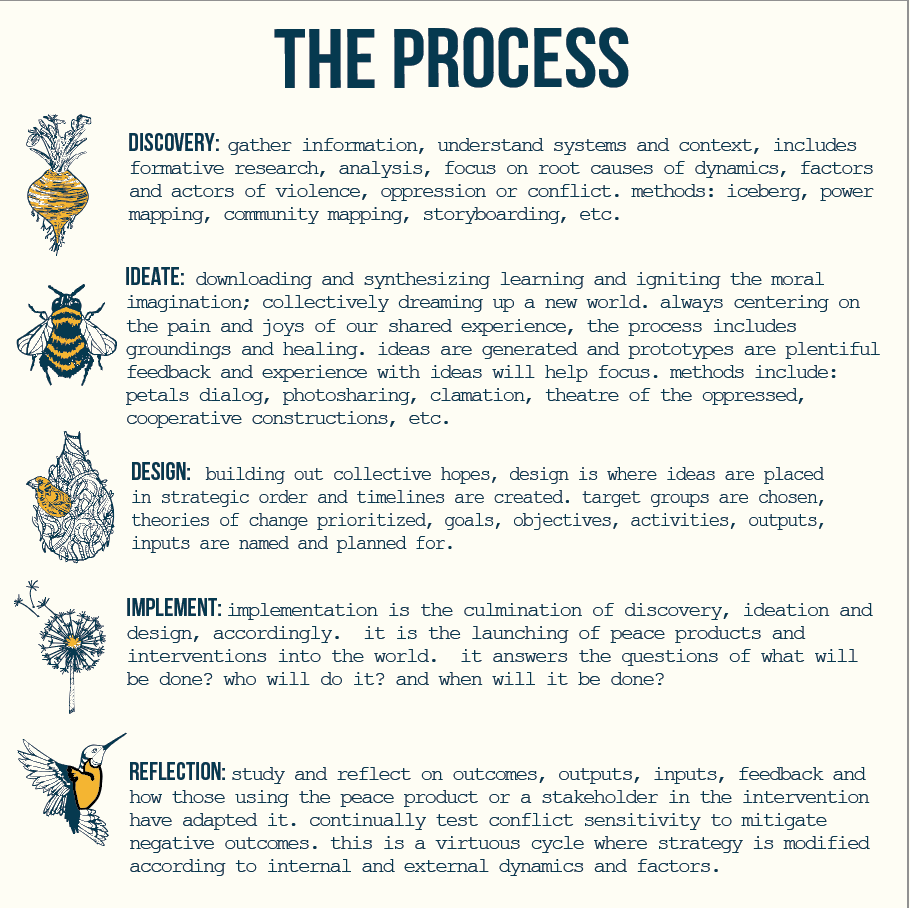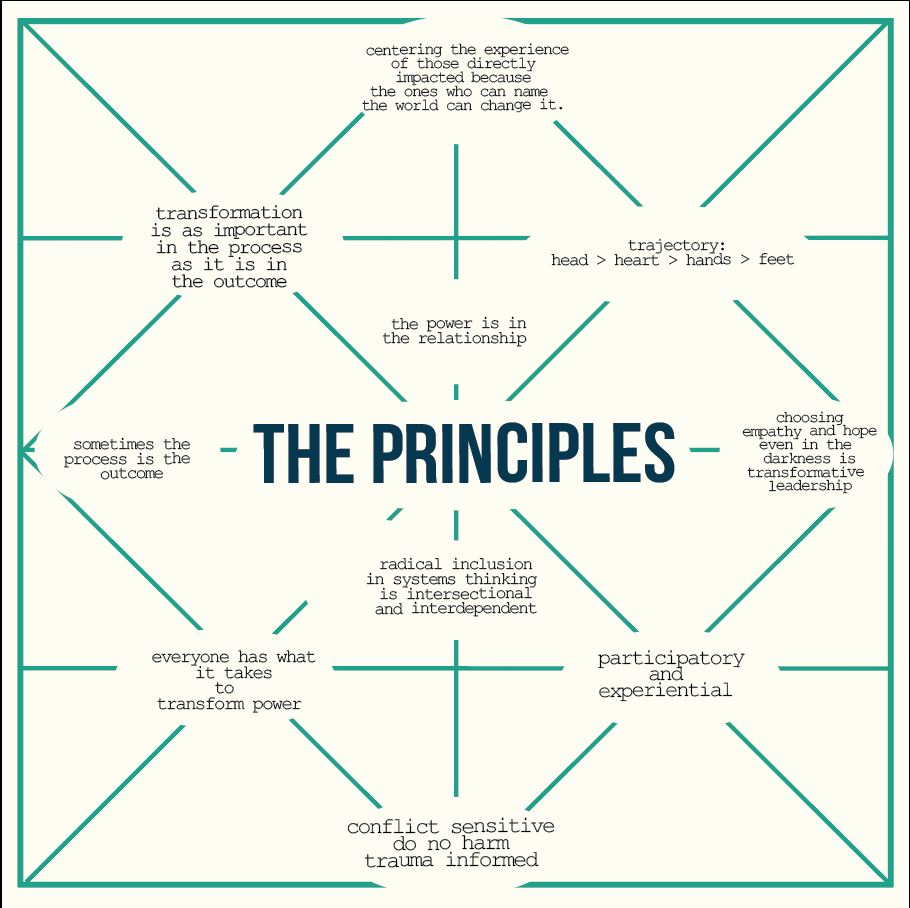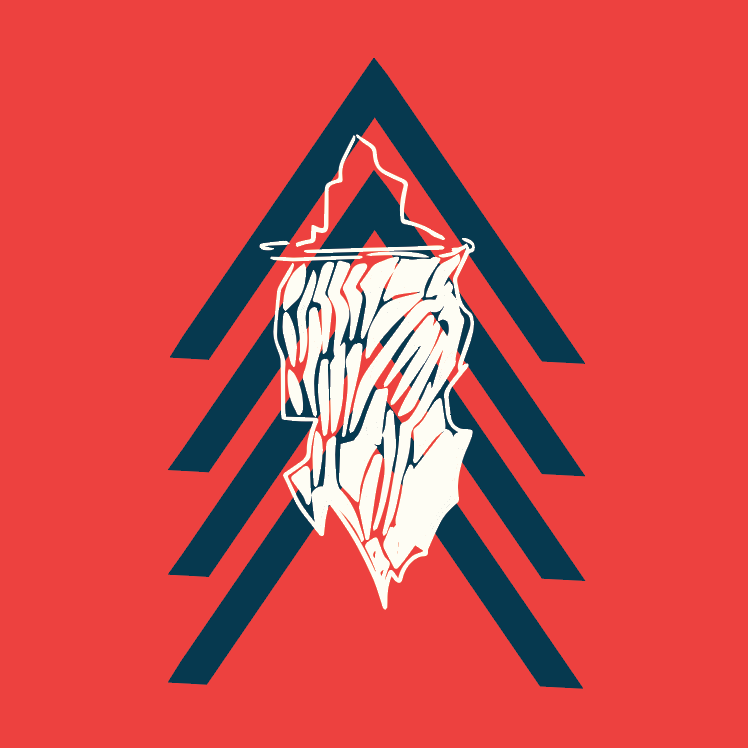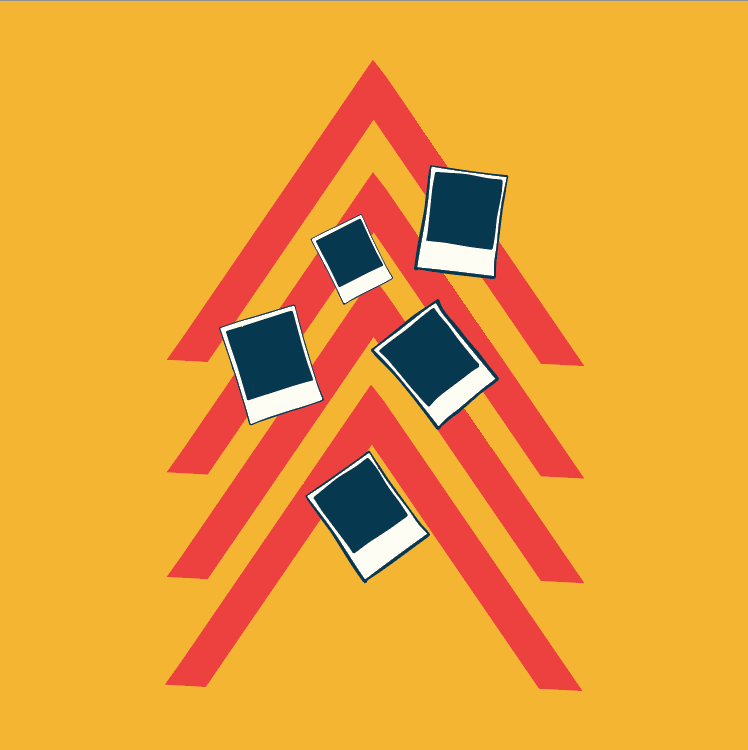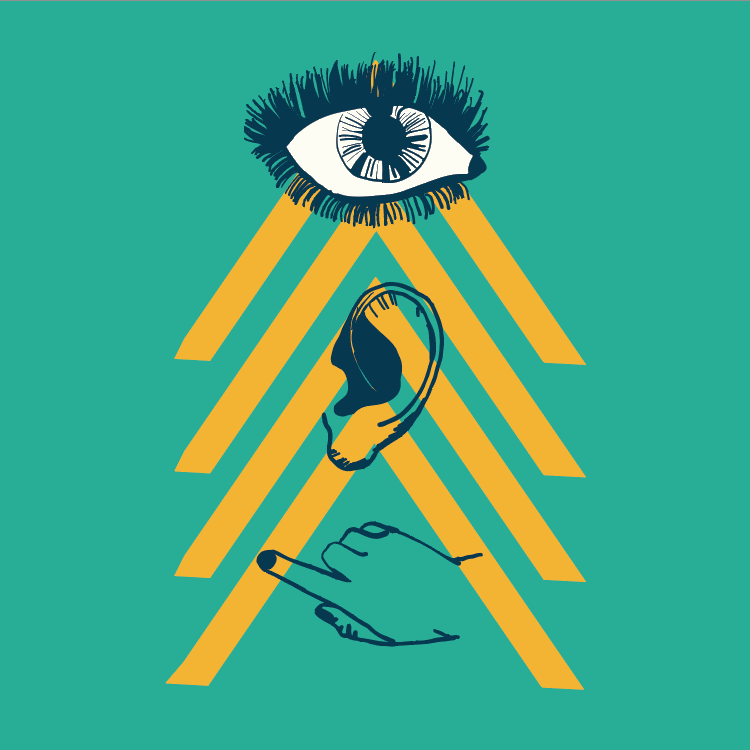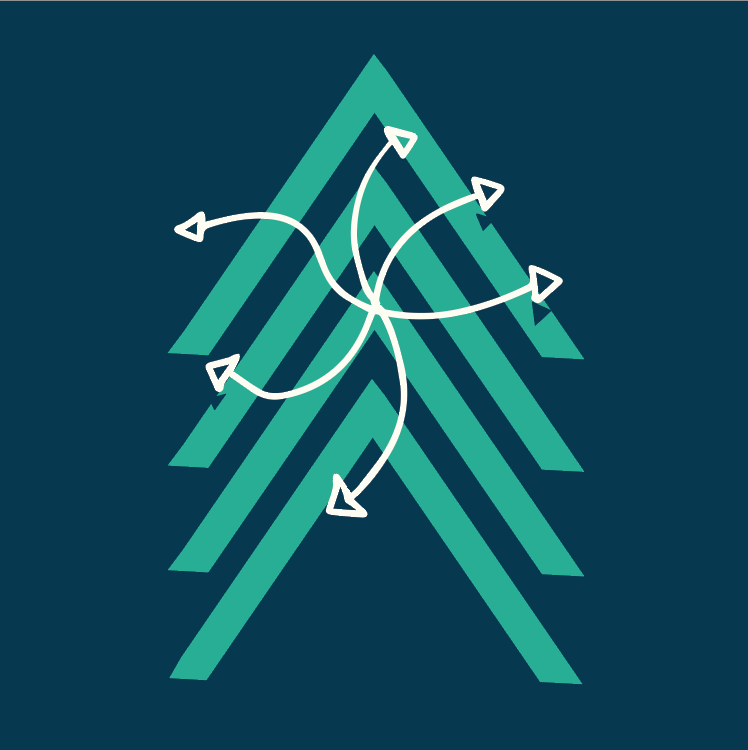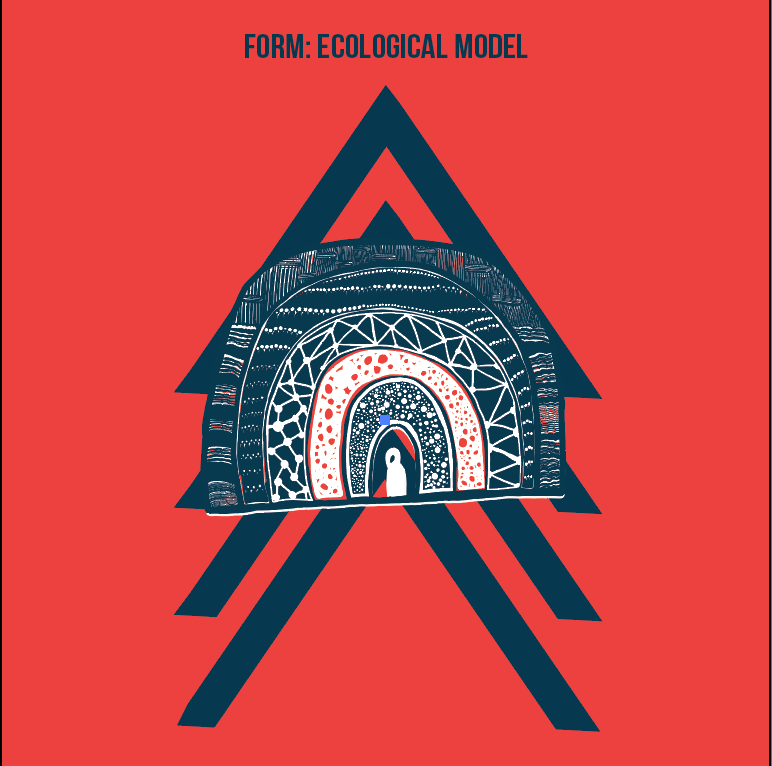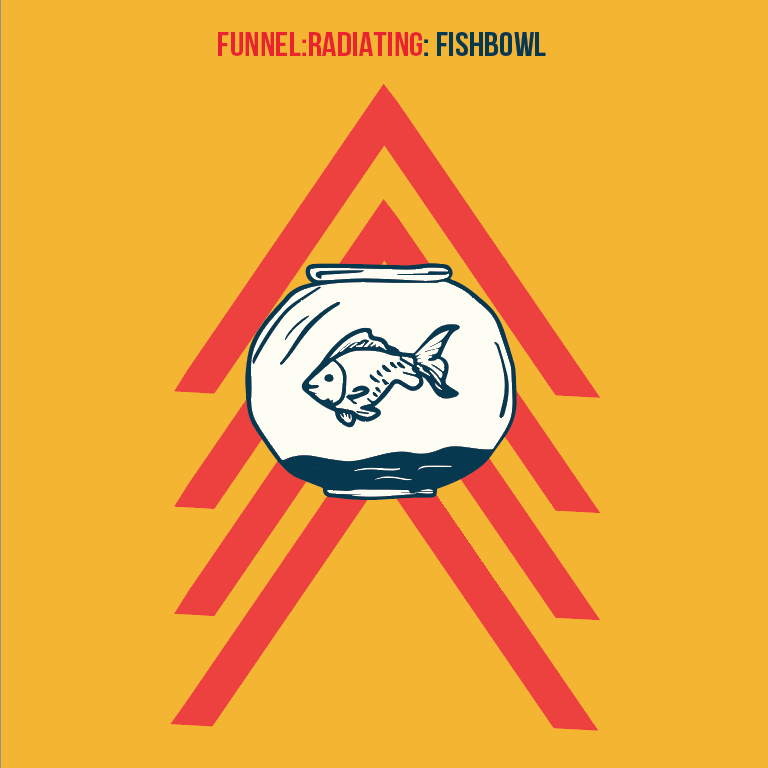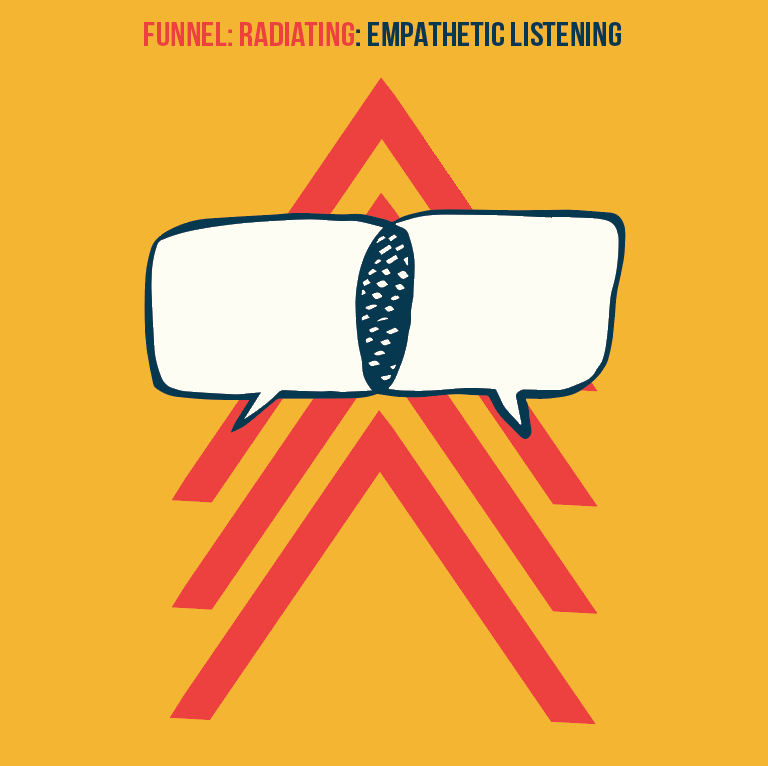The Frame Design Process
Building peace and fighting for justice in a world that is increasingly dynamic, complex and interconnected calls for new ways to engage and understand violence and oppression. It also calls for dynamic not linear, creative story-based, complex, yet simple, interconnected and intersectional ways to design and deliver it. Designing peace and justice requires deep listening, generative conversations and centering those that are directly impacted by violence and oppression. We have designed a powerful methodology for participatory design called the “Frame Design Process” or FDP which has transformed how interventions and programs are designed and implemented by shifting the power of who identifies problems and creates solutions. It centers those that most impacted and gives them the resources to frame the problem and prototype solutions. FDP is a design thinking methodology however rather than designing for those impacted, the FDP is design with communities and organizations that want to transform their world. The Frame design process takes participants through the discovery, ideation, design, prototyping and iterative process that is implementation and the reflection phase. Activate Labs uses the FDP process in our peacebuilding trainings, program strategy design, monitoring and evaluation, and storytelling initiatives. We also train and resource organizations and communities in the process.
The Design Process
DISCOVERY: gather information, understand systems and context, includes formative research, analysis, focus on root causes of dynamics, factors and actors of violence, oppression or conflict. methods: iceberg, power mapping, community mapping, storyboarding, etc.
IDEATE: downloading and synthesizing learning and igniting the moral imagination; collectively dreaming up a new world. always centering on the pain and joys of our shared experience, the process includes groundings and healing. ideas are generated and prototypes are plentiful feedback and experience with ideas will help focus. methods include: petals dialog, photosharing, claymation, theatre of the oppressed, cooperative constructions, etc.
DESIGN: building out collective hopes, design is where ideas are placed in strategic order and timelines are created. target groups are chosen, theories of change prioritized, goals, objectives, activities, outputs, inputs are named and planned for.
IMPLEMENT: implementation is the culmination of discovery, ideation and design, accordingly. it is the launching of peace products and interventions into the world. it answers the questions of what will be done? who will do it? and when will it be done?
REFLECTION: study and reflect on outcomes, outputs, inputs, feedback and how those using the peace product or a stakeholder in the intervention have adapted it. continually test conflict sensitivity to mitigate negative outcomes. this is a virtuous cycle where strategy is modified according to internal and external dynamics and factors.
The Principles
The Frame Design Process is based on core principles that are grounded in our values and vision for the world we are building together.
centering the experience of those directly impacted by violence and oppression - because the ones who can name the world can change it
transformation is as important in the process as it is in the outcome
our trajectory: head > heart > hands > feet
the power is in the relationship
choosing empathy and hope even in the darkness is transformative leadership
radical inclusion in systems thinking is intersectional and interdependent
we are participatory and experiential
everyone has what it takes to transform power
conflict sensitive do no harm trauma informed
The Method
Conducted throughout the design process are designed to harness creativity, flexibility and transformation.
Frame: rhythm and temperature of workshop, facilitator role, collaborative and inclusive culture building.
Form: conflict transformation theories, behavioral change theories, theories of change etc.
Fun and Feelings: embodied energizers and groundings that balance energy, build community, strengthen relationships and help those dealing with trauma return to the here and now allowing them to use the pain as a creative force.
Funnels: Facilitated exercises and activities for ideation, synthesizing information, storytelling, design, implementation and reflection
Converging Funnels: facilitates many ideas and stories under one central theme or idea.
Radiating Funnels: facilitates ideation and storytelling from one central idea or theme to many definitions and stories.
